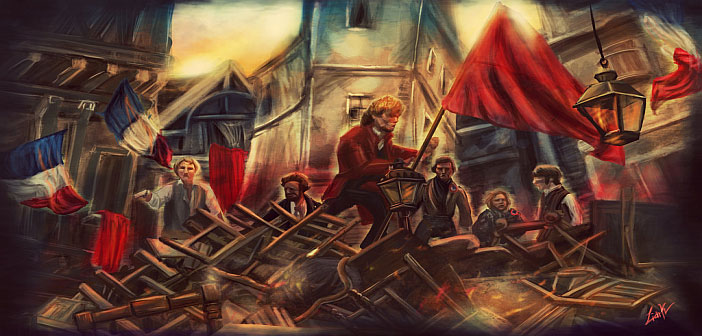Source: Medium
Where is today’s serious work of Western literature dealing with the plight of Palestinians, asylum seekers, migrants, the struggles of the poor and dispossessed?
Modern literature lacks the epic works that encompass and define the times in which we live, capturing that elusive but necessary timelessness symptomatic of the profundity that is required of a classic.
Perhaps Don Delilio’s Underworld (1997) is the closest there has been to claiming that mantle over the past thirty years or so, but since then there has been little to get excited about amid the plethora of vacuous tripe proffered by the mainstream; which in the main consists of novels written by middle class people for other middle class people, wherein the most common issues being grappled with are unsatisfying sex lives and the colour of the wallpaper in the drawing room of the second house in the country.
Where is the serious work of Western literature that deals or has dealt with the plight of the Palestinians, asylum seekers, migrants, the struggles of the poor and dispossessed in the 21st century? Having just re-read Victor Hugo’s magisterial Les Miserables this absence becomes even more evident, not to mention stark.
The themes encapsulated in Hugo’s 1862 magnum opus –redemption, love, justice, crime and punishment, morality, human solidarity — unfold during the course of a story that begins at the end of Napoleon’s climactic ‘100 days’. As a quick reminder, they begin with the Corsican general’s arrival back in Paris from exile on 20 March 1815, and end with the restoration of King Louis XVIII on 8 July 1815 in the wake of his historic defeat at the Battle of Waterloo. The story ends in 1832 after the short-lived ‘June Rebellion’, when French republicans rose up against the monarchy of Louis Phillipe in Paris and were quashed.
The central narrative of the novel revolves around the Herculean efforts of escaped convict Jean Valjean to avoid the clutches of his nemesis the fanatical Inspector Javert, who is obsessed with apprehending and putting him back in prison.
Jean Valjean is a tragic hero of Aristotelian dimension, whose exploits both inspire and humble with the surfeit of courage and compassion that define them. Engaged in an elemental struggle to maintain his humanity in the face of dramatic episodes of cruelty, tragedy, and injustice, Valjean’s story reveals the disjuncture that exists between the law and morality in societies in which obscene levels of wealth and ostentation rest on foundations of extreme poverty and human despair.
His personal journey takes him from the depths of this despair as a convict to the heights of social status and comfort as a wealthy businessman-turned mayor of a small provincial town. This is before he is plunged back down to the depths when sent back to prison after revealing his true identity in order to prevent another man being imprisoned in his place, having been mistaken for him.
Thereafter he once again escapes and ultimately finds happiness as guardian of the infant Cosette, rescuing her from the cruelty of the Thernardiers into whose care the child was placed by her suffering mother Fantine in return for money.
Space of course prohibits the unpacking of the novel in its entirety, but it contains some of the most heartrending and gripping scenes ever to appear in a work of historical fiction. Unlike many such novels in which the story unfolds in and around actual historical events, the characters created by Hugo are equal to those events rather than dwarfed by them, as they are for example in Gustave Flaubert’s Salambo, set in Carthage during the epoch of the Barcas.
Hugo’s rendering of the Battle of Waterloo, which takes up nineteen chapters of the book alone, are deserving of their own category of excellence. Indeed this section of the novel is so immersive that upon reading it you find yourself compelled to source more material about the battle, especially the legendary charge of the French Cuirassiers over the sunken road against the massed squares of the British infantry at the battle’s climax. It is a section that invites comparison with other great historical works in which major battles have been depicted; Tolstoy’s War and Peace perhaps the most obvious example in this regard.
The great Russian novelist’s depiction of the Battle of Borodino similarly humanises one of the most important military encounters of the Napoleonic Wars. In parenthesis, Hemingway cited Tolstoy’s treatment of the battle as inspiration when writing the battle scenes in his A Farewell to Arms. Another historical novel regularly praised for its battle scenes is Stephen Crane’s The Red Badge of Courage, which follows the exploits of the story’s protagonist, Private Henry Fleming, as a soldier with the fictional 304th New York Regiment during the US Civil War. The interesting thing about Crane is that he wrote his classic novel and its battle scenes never having personally tasted combat or life in the military.
The only work of modern fiction that sits on a par with the aforementioned works when it comes to graphically and effectively describing the fear, tension, courage, and brutality of war is Sebastian Faulks’ Birdsong; in particular the tunnel scenes under the trenches with Jack Firebrace, which are unforgettable.
This being said, Les Miserables eclipses them all when Hugo moves beyond the novel’s battle scenes. The main characters of War and Peace, for example, are members of the Russian nobility and leave you cold with their bourgeois conceits, while in The Red Badge of Courage Crane only skims the surface when it comes to the Civil War, focusing instead on the personal exploits of one particular soldier and in the process missing the opportunity to unpick the social evil and abomination of slavery that lay at the conflict’s heart.
When it comes to A Farewell To Arms, meanwhile, mawkish sentimentality runs in parallel with some of the most poetic prose every written in the English language. It’s for this reason that I beg to assert the superiority of Hemingway’s other classic war novel — For Whom the Bell Tolls — out of the two.
Some of the many truly wonderful scenes depicted in Hugo’s novel, apart from the Battle of Waterloo, involve the previously mentioned rescue of Cosette from the cruel treatment of the Thernardiers by Jean Valjean; the breathtaking suspense of Valjean’s escape with Cosette from Javert through the streets of Paris, culminating in them taking refuge in a convent; the courageous defence of the barricade against Royalist troops during the June Rebellion, where a group of idealistic and defiant young Republicans hold out until every one of them, apart from Marius, is killed.
Then, immediately after the barricade falls, we have Valjean’s heroic rescue of the wounded Marius, carrying him on his back through the sewers of Paris in order to evade capture. In this particular section of the novel, the power of Hugo’s prose confirms that great works of fiction often eclipse works of philosophy when it comes to penetrating and making sense of the human condition.
In comparison to other classic works of literature that explore the human condition in periods of great social and political upheaval, Les Miserables is up there with Dostoevsky’s Crime and Punishment, Turgenev’s A Sportsman’s Notebook; Emile Zola’s Germinal; and Upton Sinclair’s The Jungle. As for Dickens, the English novelist could not in my opinion lace Victor Hugo’s authorial boots — not with his penchant for substituting caricatures for living breathing characters and the irritating paternalism that undergirds his treatment of the poor and recurring theme of social injustice.
Venezuela’s deceased former president, Hugo Chavez, credited Les Miserables with turning him into a socialist and it’s easy to see why. Even Homer’s Iliad pales in comparison when it comes to the epic sweep of the novel and exploits of its central character, Jean Valjean. In fact I feel emboldened to assert that it would be impossible to come up with a more courageous, noble and heroic character in a work of literature.
Explaining his motivation for writing the novel, Hugo said,
“I don’t know whether it will be read by everyone, but it is meant for everyone. It addresses England as well as Spain, Italy as well as France, Germany as well as Ireland, the republics that harbour slaves as well as empires that have serfs. Social problems go beyond frontiers. Humankind’s wounds, those huge sores that litter the world, do not stop at the blue and red lines drawn on maps. Wherever men go in ignorance or despair, wherever women sell themselves for bread, wherever children lack a book to learn from or a warm hearth, Les Miserables knocks at the door and says: ‘open up, I am here for you’.”
Literature as a beacon of hope and testament to the power of the human spirit in the face of injustice and adversity has never been more nobly or powerfully articulated.

